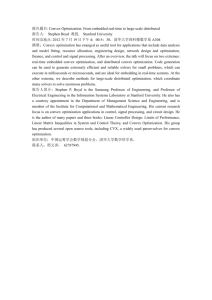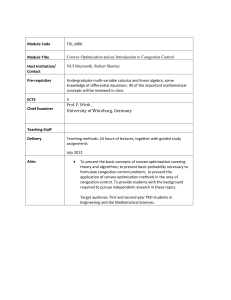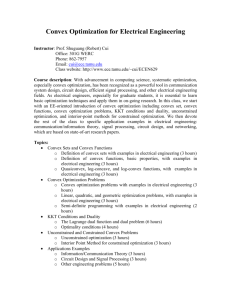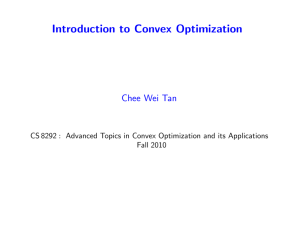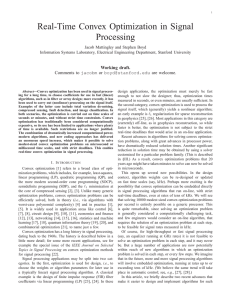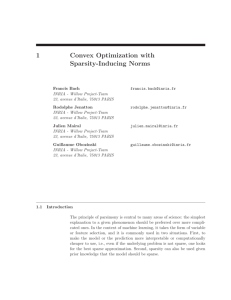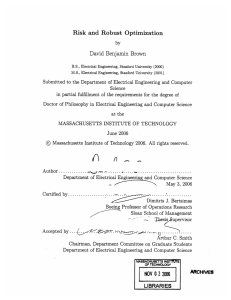Convex Optimization I: Course Information
advertisement
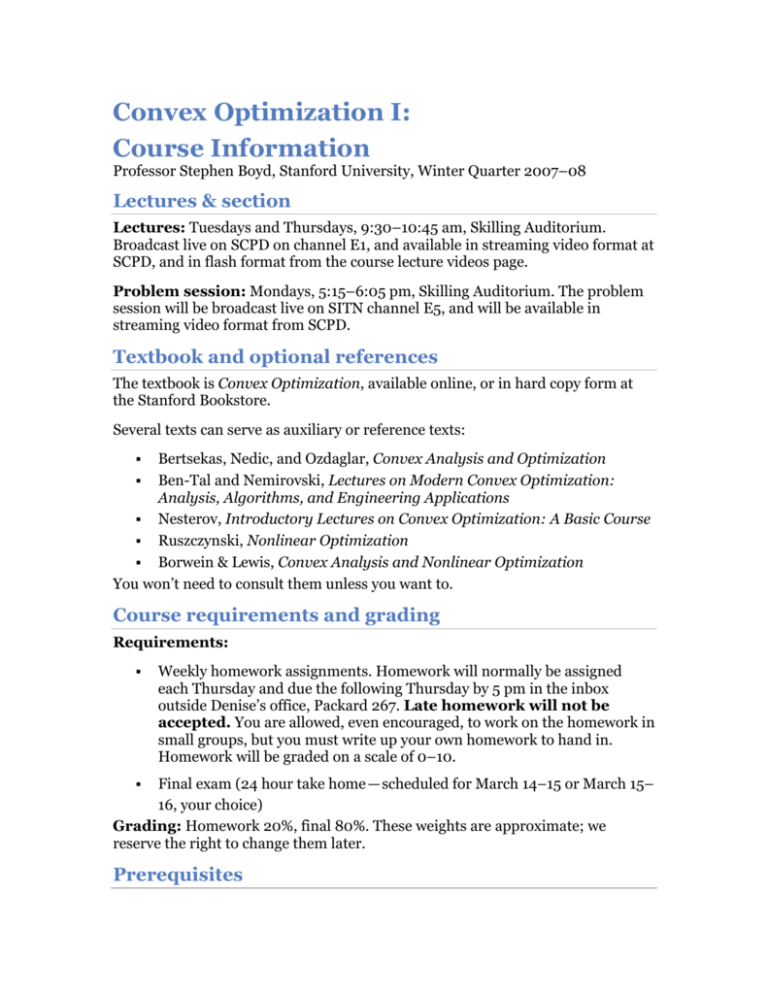
Convex Optimization I: Course Information Professor Stephen Boyd, Stanford University, Winter Quarter 2007–08 Lectures & section Lectures: Tuesdays and Thursdays, 9:30–10:45 am, Skilling Auditorium. Broadcast live on SCPD on channel E1, and available in streaming video format at SCPD, and in flash format from the course lecture videos page. Problem session: Mondays, 5:15–6:05 pm, Skilling Auditorium. The problem session will be broadcast live on SITN channel E5, and will be available in streaming video format from SCPD. Textbook and optional references The textbook is Convex Optimization, available online, or in hard copy form at the Stanford Bookstore. Several texts can serve as auxiliary or reference texts: Bertsekas, Nedic, and Ozdaglar, Convex Analysis and Optimization Ben-Tal and Nemirovski, Lectures on Modern Convex Optimization: Analysis, Algorithms, and Engineering Applications Nesterov, Introductory Lectures on Convex Optimization: A Basic Course Ruszczynski, Nonlinear Optimization Borwein & Lewis, Convex Analysis and Nonlinear Optimization You won’t need to consult them unless you want to. Course requirements and grading Requirements: Weekly homework assignments. Homework will normally be assigned each Thursday and due the following Thursday by 5 pm in the inbox outside Denise’s office, Packard 267. Late homework will not be accepted. You are allowed, even encouraged, to work on the homework in small groups, but you must write up your own homework to hand in. Homework will be graded on a scale of 0–10. Final exam (24 hour take home — scheduled for March 14–15 or March 15– 16, your choice) Grading: Homework 20%, final 80%. These weights are approximate; we reserve the right to change them later. Prerequisites Good knowledge of linear algebra (as in EE263). Exposure to numerical computing, optimization, and application fields helpful but not required; the engineering applications will be kept basic and simple. Catalog description Concentrates on recognizing and solving convex optimization problems that arise in engineering. Convex sets, functions, and optimization problems. Basics of convex analysis. Least-squares, linear and quadratic programs, semidefinite programming, minimax, extremal volume, and other problems. Optimality conditions, duality theory, theorems of alternative, and applications. Interiorpoint methods. Applications to signal processing, control, digital and analog circuit design, computational geometry, statistics, and mechanical engineering. Course objectives to give students the tools and training to recognize convex optimization problems that arise in engineering to present the basic theory of such problems, concentrating on results that are useful in computation to give students a thorough understanding of how such problems are solved, and some experience in solving them to give students the background required to use the methods in their own research or engineering work Intended audience This course should benefit anyone who uses or will use scientific computing or optimization in engineering or related work (e.g., machine learning, finance). More specifically, people from the following departments and fields: Electrical Engineering (especially areas like signal and image processing, communications, control, EDA & CAD); Aero & Astro (control, navigation, design), Mechanical & Civil Engineering (especially robotics, control, structural analysis, optimization, design); Computer Science (especially machine learning, robotics, computer graphics, algorithms & complexity, computational geometry); Operations Research (MS&E at Stanford); Scientific Computing and Computational Mathematics. The course may be useful to students and researchers in several other fields as well: Mathematics, Statistics, Finance, Economics.
